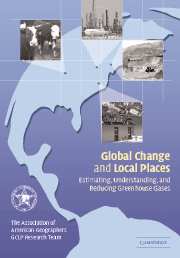Book contents
Foreword
Published online by Cambridge University Press: 31 July 2009
Summary
Think globally and act locally has been a slogan of the environmental movement for many years. The idea spawned an awareness of changes in our environment that have led individuals and communities across the nation and around the world to undertake recycling, energy conservation measures, and other actions that have helped increase our stewardship. While many of the observed changes could be seen in our immediate environment and surrounding our communities, there was a growing recognition that there were other changes on a grander scale: rapid rates of change in global average atmospheric temperatures and the extremes in weather, increased precipitation in some regions while major droughts occurred in others, ozone depletion and greenhouse gas increases, sea-level rise, and other measures of the state of the planet's life support systems. Although the life-enabling envelope that surrounds the planet has been changing forever on many time scales, the acceleration in rates of change during the past century or two has not been seen for 10,000 years or more in some cases, and in others not for millions of years. While the environmental movement was a product of the 1960s that led to recycling and other measures of environmental stewardship, the early 1980s brought a stark recognition that there were other changes which are global in reach, that could have profound long-term implications, and which could be anthropogenic in origin.
- Type
- Chapter
- Information
- Global Change and Local PlacesEstimating, Understanding, and Reducing Greenhouse Gases, pp. xiii - xviPublisher: Cambridge University PressPrint publication year: 2003
- 1
- Cited by



